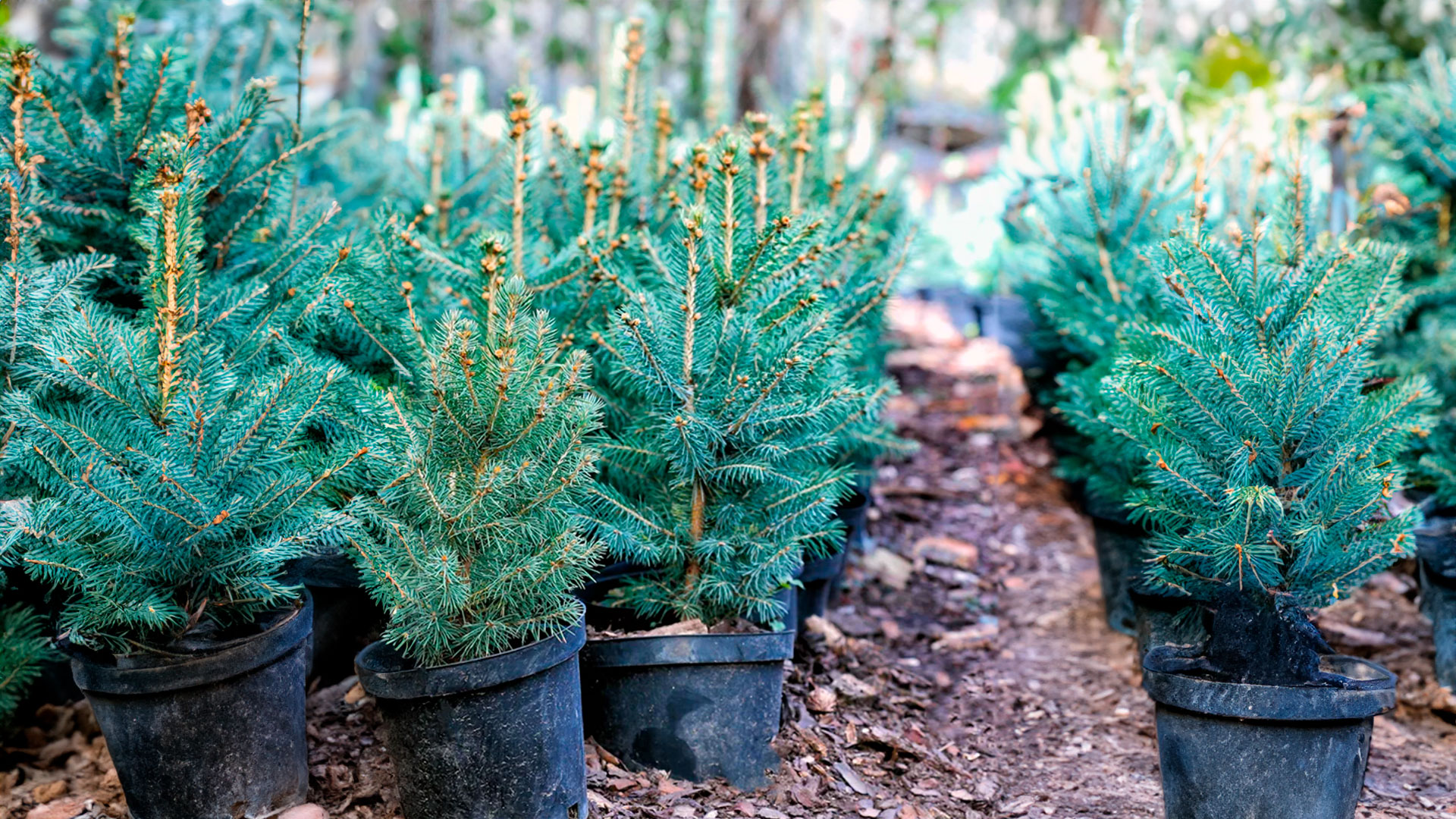Choosing a potted Christmas tree is a green way to celebrate the New Year, as it can be replanted later. However, these trees need careful attention to stay healthy. We need to understand the reasons behind needle loss and dehydration, and learn preventive measures.
Potted Christmas trees are susceptible to certain problems due to their specific growing conditions. Issues such as unsuitable pot sizes and inadequate drainage can lead to root complications, while lack of water and poor light exposure can induce stress. These factors can harm the tree, so it’s essential to provide attentive care.
For your potted Christmas tree to flourish, consider the following advice:
Smart Selection: Pick a robust tree with lively needles and roots. Steer clear of trees exposed to harsh sunlight or extreme cold.
Careful Transplanting: Repot the tree into a larger container with proper drainage, using soil formulated for coniferous plants. Make sure not to cover the root collar to avoid decay.
Ideal Location: Set the tree in a bright area without drafts, away from direct sunlight or heat sources. Keep the ambient temperature between 18-22 degrees Celsius.
Consistent Watering: Irrigate the tree when the surface soil feels dry, using lukewarm, gentle water. Don’t overwater to sidestep root rot. Mist the tree’s needles regularly to keep them hydrated.
Nutrient Supply: Feed the tree with a liquid fertilizer designed for coniferous plants once a week, alternating between applying to the soil and the foliage. Refrain from over-fertilizing.
By adhering to these tips, your potted Christmas tree will stay vigorous until it’s time to plant it outdoors in the spring. Give the tree some time to adjust to its new environment after you bring it home.
How to transplant a potted Christmas tree into the garden?
Transplanting a potted Christmas tree into your garden is ideally done after the danger of frost has passed, usually in late spring or early summer. Here’s a rephrased guide on how to do it:
Acclimatize the Tree: Begin by getting your Christmas tree used to the outdoor environment. Place it outside for a few hours each day in a shaded spot, gradually increasing its time outdoors and exposure to the elements over two to four weeks. Shield it from intense sunlight and strong winds during this period.
Choose the Right Spot: Find a sunny but not scorching location with rich, well-draining, acidic soil. Keep it away from large trees or buildings to avoid competition for resources.
Planting Steps:
- Prepare the Hole: Dig a hole that’s 10-15 cm wider and deeper than the tree’s pot.
- Soil Mixture: Combine the removed soil with peat, sand, charcoal, and fertilizer made for coniferous plants.
- Water the Hole: Pour water into the hole and let it soak in completely.
- Remove the Tree: Carefully lift the tree out of its pot by the trunk.
- Position the Tree: Set the tree in the middle of the hole, spreading out the roots evenly. Ensure the root collar remains above ground.
- Backfill the Hole: Add the soil mixture back into the hole, pressing down as you fill to remove air pockets, and form a slight mound around the base for watering.
- Water Thoroughly: Drench the area to settle the soil and eliminate air gaps around the roots.
- Mulch: Surround the tree with a layer of peat, straw, pine needles, or bark to help maintain soil conditions.
By following these steps, your Christmas tree will be well-prepared for a successful transition to garden life. Give it some time to adjust to the new environment after the initial move.
To ensure your Christmas tree grows well after planting, it’s important to continue providing it with the right care:
Frequent Watering: Keep the soil moist by watering the tree often, particularly during the first few weeks. Use tepid, filtered water and water early in the day to avoid scorching the needles.
Nutritional Support: Feed your tree every month with a balanced liquid fertilizer. Switch between applying it to the soil and spraying it on the leaves, but be careful not to overdo it.
Protection from Harm: Defend your tree from pests and diseases. You can use products from your local garden store or homemade mixtures like soap, garlic, pepper, onion, tobacco, or pine needles. It’s best to apply these treatments in the cooler hours of morning or evening to avoid damaging the needles.
Following these steps will help your Christmas tree establish itself and thrive in your garden, bringing you joy with its natural beauty and aroma. Wishing you all the best in your gardening journey!
Check the next Post: Basil on the windowsill: secrets of growing spicy greens at home




